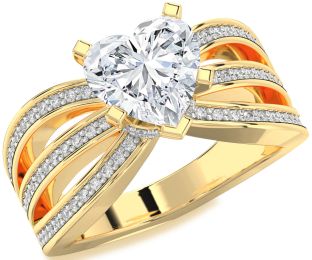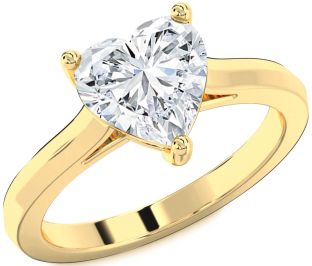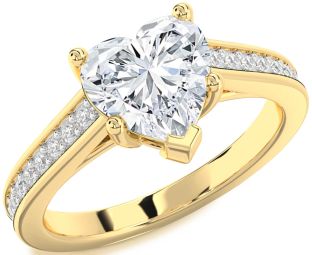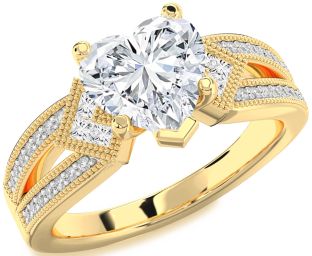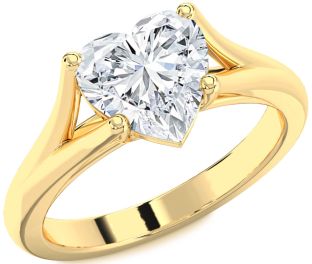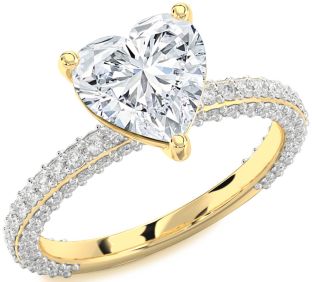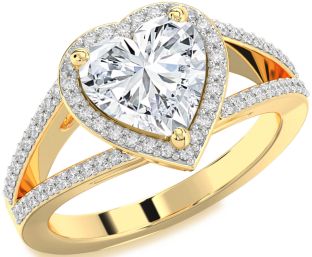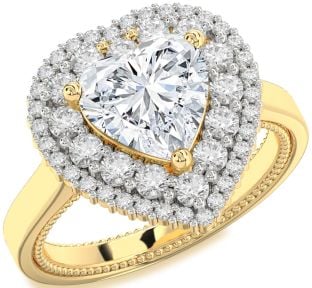Diamond Gold Silver Round Halo Pave Engagement Ring
Free Shipping
Get it in USA by Wednesday, Aug. 27 >
This Halo Pave Engagement Ring [Selection_stone] The current selection is made from . . . .
This bold Engagement Ring commands attention with a dazzling round centerpiece encircled by a double halo of shimmering brilliance. The wide band, adorned with layered rows of radiant accents, adds depth and grandeur to the design. A true celebration of enduring love, this ring blends strength, elegance, and timeless sophistication in one unforgettable statement.
[general_gem]
Item Details
This Halo Pave Engagement Ring is available in Gold, Platinum and Sterling Silver set with a choice of Diamonds and Gemstones. The current selection is made from . . . .
This bold Engagement Ring commands attention with a dazzling round centerpiece encircled by a double halo of shimmering brilliance. The wide band, adorned with layered rows of radiant accents, adds depth and grandeur to the design. A true celebration of enduring love, this ring blends strength, elegance, and timeless sophistication in one unforgettable statement.
Individually Handcrafted. Guaranteed Quality.
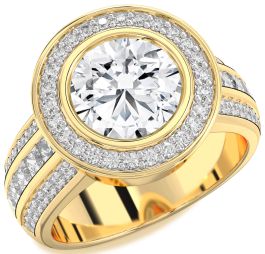
See Full Details
STONE 1
| Type |
N/A |
| Quality Grade |
N/A |
| Size |
8 mm |
| Weight |
N/A |
STONE 2
| Type |
N/A |
| Quality Grade |
N/A |
| Size |
1.2 mm |
| Weight |
N/A |
STONE 3
| Type |
N/A |
| Quality Grade |
N/A |
| Size |
1.5 mm |
| Weight |
N/A |
STONE 4
| Type |
N/A |
| Quality Grade |
N/A |
| Size |
1.2 mm |
| Weight |
N/A |
SETTING
| Max Ring Width |
15 mm |
| Metal |
|
RING SIZE
|
Not Selected |
ENGRAVING
|
Your special message... |

Customer Reviews
Verified Customer Reviews
from this merchant give
them a 4 or 5-Star rating.
How to Find Your Ring Size
Sizing Tips
Finding your ring size is very simple. For the most accuracy, measure the inside diameter of an existing ring (worn on the same hand and finger), and then find that measurement on the Ring Sizing Chart. If you don’t have a ring to use, follow these easy steps:
Step 1: Cut a strip of paper long enough to fit around your finger
Step 2: Wrap the paper around your finger, just above the knuckle, and mark the point at which the two ends meet
Step 3: Measure the paper from mark to mark
Step 4: Find that measurement on the Ring Sizing Chart to locate your size
Free Resizing
If you still don't know the exact ring size to order, rest assured, we provide one (1) FREE resizing of your ring within 60 days of the original shipping date. This includes items that have been engraved.
Mo Anam Cara: Means ‘My soul mate‘ (pronounced 'muh anem Ka-rah') copy
Mo shíorghrá: Means ‘My eternal love‘ sometimes used as a term for ‘soulmates’. (pronounced 'muh HEER-ggrawh') copy
Ghrá Dilseacht Cairdeas: Means ‘Love, Loyalty & Friendship‘ (pronounced ‘Graw Deal-shockt Char-dis’) copy
Ghrá go deo: Means ‘Love Forever‘ (pronounced ‘graw gu djo’) copy
Mo fhíorghra: Means ‘my true love’, one of the most romantic phrases around. (pronounced ‘ muh heer-graw’) copy
A Stór: Means ‘my treasure’, usually used to express affectionate friendship, especially for parent and children relationships. (pronounced ‘store’) copy
Le grá go deo: Means 'with love forever' (pronounced ‘leh graw gu djo’) copy
A Pheata: Means ‘a mother’s darling’, for a mother to express endearment for her children. (pronounced ‘fat-a’) copy
Mo Ghrá: Means ‘my love’, for relationships that are that little bit more serious! (pronounced ‘muh graw’) copy
Mo Chuisle: Literally means ‘my pulse’, for the person who makes your heart beat. Also can mean 'My Darling' (pronounced ‘muh Kooish-la') copy
A Ghrá mo Chroí: Means ‘my heart’s beloved’ or ‘the love of my heart’. (pronounced 'graw mu kree') copy
A Thaisce: Means ‘my treasure’, another version of ‘a stór’. (pronounced ‘hash-ka’) copy
Mo Mhuirnin: Means ‘my little darling’ or ‘my dear’, a more formal phrase (pronounced ‘muh mur-neen’) copy
A chéadsearc: Means ‘my first love’, or ‘my one and only’. (pronounced ’Khayd-shark') copy
A Chara: Means ‘friend’ (pronounced 'Kaw-rah') copy
A Chroí: Means ‘my heart’, a stronger version of the above, meant more for lovers to use. (pronounced 'kree') copy
Is tú mo ghrá: Means 'You are my love'. (pronounced 'Iss too mu graw' ) copy
Mo Shearc: Means ‘my love’ Another simple version of ‘mo ghrá’. (pronounced ‘ muh hark’) copy
Is tú mo rogha: Means 'You are my chosen one' (pronounced 'iss too mu row-ah') copy
A chuisle mo chroí: Means 'My heart’s beloved' (pronounced 'Kooish-la mu kree') copy
Ádhraím thú: Means'I adore you' (pronounced 'aw-reem hoo') copy
Mo Rúnsearc Literally means ‘my secret love’, there is no direct equivalent in English. (pronounced ‘ muh roon-hark’) copy
A stór mo chroí: Means 'Love of my heart' (prounouned 'ah sthohr muh kree') copy
Is tú grá geal mo chroí: Means 'You are the bright love of my heart' (pronounced 'Iss too graw gee-yal mu kree') copy
Mo ghrá thú: Means ‘you are my love’ (pronounced 'Muh ghraw hoo') copy
Táim i ngrá leat: Means 'I’m in love with you' (pronounced 'Tawm i graw lat') copy
Mo Leannán: Means 'My lover' (pronounced 'Muh lah-nawn') copy
Tá tú mo chéadsearc: Means 'You are my true love' (pronounced 'thaw too muh Khayd-shark') copy
Is tusa mo ghrá: Literally Means 'You are my love' (pronounced' Iss tus-ah mow-ghraw') copy
A Ghrá Geal: Means ‘my bright love’ (pronounced ‘graw gee-yal’) copy
A Chumann: Means ‘my sweetheart’ (pronounced ‘come-an’) copy
Seanleannán: Literally means ‘old love’, or ‘old flame’. (pronounced ‘shan-lan-awn’) copy
Meala: Means ‘Honey‘ (Prounounced 'M-alla') copy
Clann: Means ‘Children‘ (Prounounced 'Klan') copy
Iníon: Means ‘Daughter‘ (Prounounced 'in-yeen') copy
Mac: Means ‘Son‘ (Prounounced 'Mack') copy
Agra: Means ‘Love, Beloved or Sweetheart‘ (Prounounced 'Ag-rah') copy
Cairde: Means ‘Friends‘ (prounounced 'card ja') copy
Síor: Means ‘Always‘ (Prounounce 'Sheer') copy








